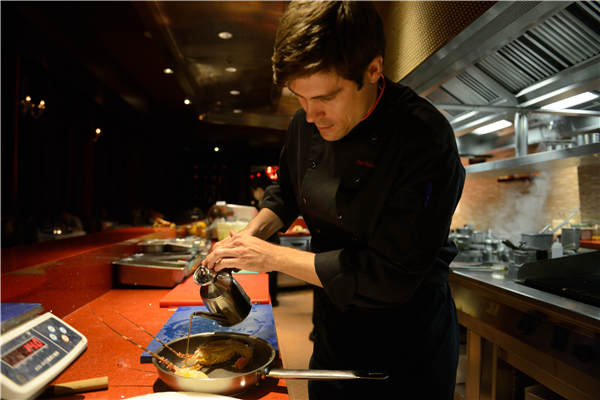Get set for food carnival
 |
|
Chef Erik Nako prepares Lobster Bobo, a grilled crustacean surrounded by pureed cassava and other Brazilian produce. |
"It's a major staple all over the country," he says, "and from it we get all sorts of flours and subproducts such as bread and tapioca (pudding)." Cassava fries are popular, and fans say they can be eaten without fear of weight gain.
Later, when Nako grills a lobster for a dish he's planned for the festival, he will start creating the plate with an artistically smeared scoop of yellow cassava puree.
But first, he's recalling the shopping list of ingredients amid that 140 kilos of produce he's brought.
"Brazil's food is a little bit like China's, in that the country is so large and has many culinary influences," he says. Many are indigenous, as the chef illustrates by identifying various foods and dishes by their faintly musical tribal names. Other influences come from colonial days, the African slave trade and waves of immigration.
"Around Sao Paulo there are German and Italian influences, in the northeast it's more Dutch - and of course there is Portuguese all over, so you find sweets with egg yolk. With that mix we end up with a cuisine that is all about color and freshness."
Tropical areas of Brazil boast flavors that would be familiar in southern China: ginger, coconut, banana.
Other items are so region-specific, however, that Nako promises that even many Brazilians won't recognize them.
But most foods and dishes will make any expats from the country homesick, like feijoada, the famous Brazilian stew. In the chef's hometown of Rio, black beans and white rice form its base, while in other parts of the country, black beans give way to red kidney beans.
















